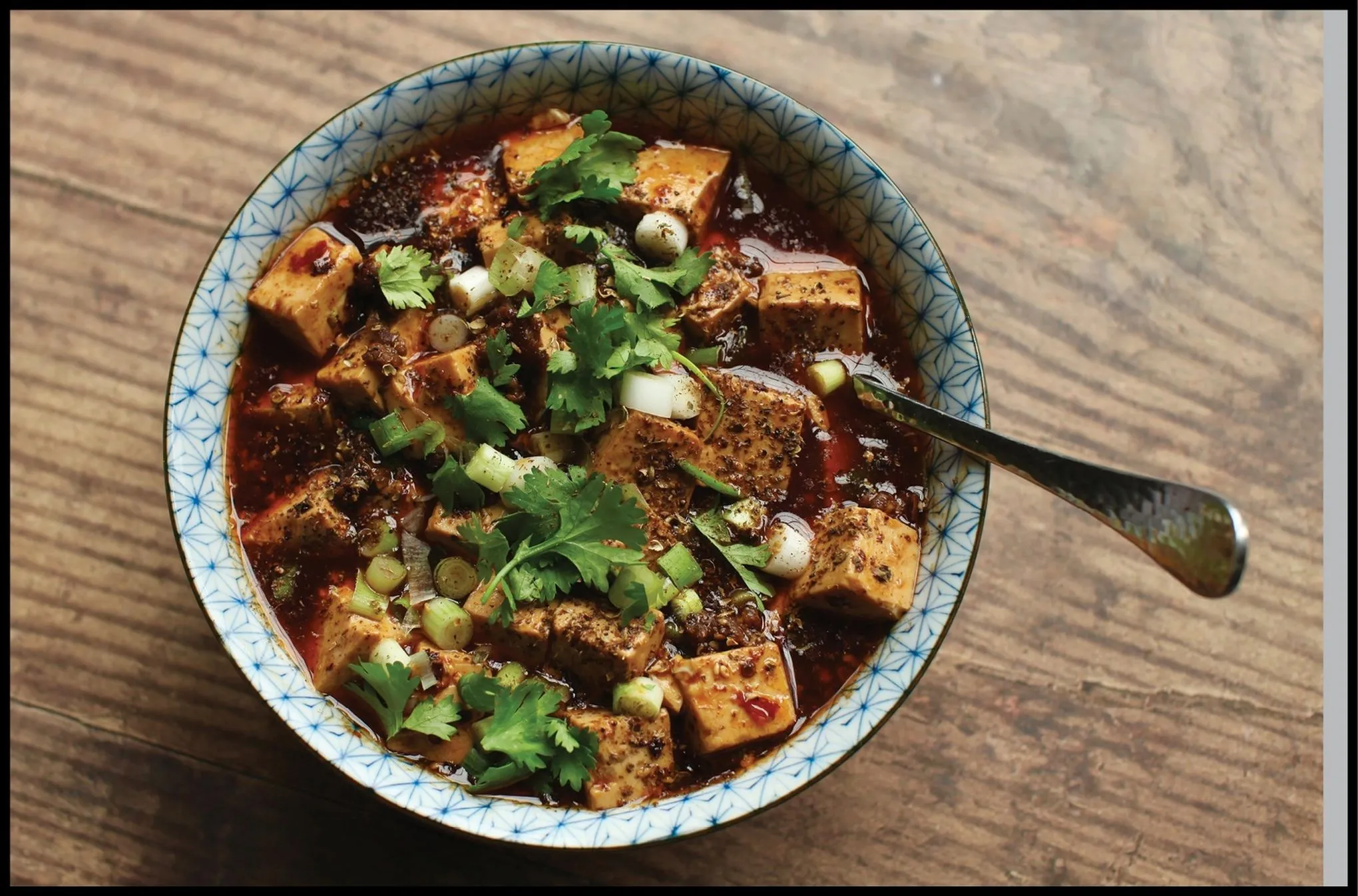
I remember the first time I went to a little Sichuan restaurant and had Mapo Tofu. The smooth tofu melted in my tongue, the spicy sauce made my taste buds tingle, and the Sichuan peppercorns gave it a distinct numbing bite that made me wonder, "Wow, how do they make this taste so good?"
I wanted to learn how to make Mapo Tofu like a restaurant in my own home, much like a lot of other food aficionados. At first, my attempts were sloppy: sauces that were too liquid, tofu that fell apart, and tastes that weren't deep enough. But after learning some restaurant secrets and going through the steps one at a time, I eventually got it right. And I'll teach you how to do it today.
What is Mapo Tofu?
Mapo Tofu is a well-known Sichuan dish with strong, spicy, and numbing characteristics. The ingredients include silken tofu, ground pork or beef, doubanjiang (spicy bean paste), garlic, ginger, and Sichuan peppercorns.
The taste is one of a kind: fiery, flavorful, a little salty, and with a numbing feeling that locals term. That's what makes it so special.
A little piece of history: A woman named Mapo, which means pockmarked old woman, opened a tiny restaurant in Chengdu in the late 1800s and made Mapo Tofu. Her spicy tofu recipe became so well-known that it spread all across the world.
People in China, Japan (where it's called Mabo Dofu), and other places enjoy Mapo Tofu today. But to make it at home with the same richness as at a restaurant, you need to know how, which I'll explain.
Read also: Beginner-friendly Sushi Recipes At Home
Key Ingredients You’ll Need
The heart of this dish lies in the ingredients. Here’s what you need to make it taste authentic:
- Tofu: The best tofu for Mapo Tofu is silken tofu for that creamy texture, but some chefs use medium or firm tofu if they want it to hold shape. I personally prefer silken tofu because it feels luxurious, just like in restaurants.
- Ground pork (or beef): Traditional Mapo Tofu uses pork, but beef also works. Some even use chicken or turkey as lighter options.
- Doubanjiang (chili bean paste): This is the soul of Mapo Tofu. It’s a fermented broad bean and chili paste from Sichuan. Without it, you won’t get the authentic flavor.
- Sichuan peppercorns: The famous numbing spice that makes your tongue tingle. Always grind them fresh for maximum aroma.
- Garlic and ginger: For depth and fragrance.
- Scallions: Freshness at the end.
- Chicken stock or water: To create the sauce base.
- Soy sauce, Shaoxing wine, and sesame oil: For balance and aroma.
- Cornstarch slurry: A restaurant trick to thicken the sauce and give it that glossy finish.
If you can’t find Doubanjiang, you can try Korean Gochujang or miso with chili flakes, but the taste won’t be the same.
Tools & Preparation Tips
When I first tried to cook Mapo Tofu, I underestimated how much the right tools and prep matter. Here are some pro tips:
- Use a wok if possible. The high heat gives better caramelization. A deep nonstick pan works too.
- Blanch the tofu before cooking. This restaurant trick keeps the tofu silky but prevents it from breaking. Just boil water, add tofu cubes, cook 2 minutes, then set aside.
- Grind Sichuan peppercorns fresh. Pre-ground ones lose aroma fast.
- Use medium-high heat. You don’t want to burn the paste but you do want it sizzling.
- Mix cornstarch with cold water. Never add it directly or it clumps.
Step-by-Step Guide: How to Make Mapo Tofu Like a Restaurant
Here’s the exact process I use:
Step 1 – Blanch the Tofu
Cut tofu into cubes, boil gently for 2 minutes, and set aside. This keeps the texture silky, like restaurants do.
Step 2 – Build the Spicy Flavor Base
Heat oil in a wok, add doubanjiang chili paste, garlic, ginger, and half the Sichuan peppercorns. Stir-fry until aromatic.
Step 3 – Cook the Meat
Add ground pork or beef and stir-fry until browned. This step creates depth.
Step 4 – Add Liquids and Simmer
Pour in chicken stock, soy sauce, and Shaoxing wine. Let it simmer so the flavors meld together.
Step 5 – Thicken the Sauce
Mix 1 tbsp cornstarch with 2 tbsp water, then slowly stir it in. The sauce should become glossy and thick, just like in a restaurant.
Step 6 – Add Tofu and Final Touches
Gently slide in the tofu, stir carefully, and cook for 2–3 minutes. Sprinkle ground Sichuan peppercorns and scallions on top.
And there you have it—authentic restaurant-style Mapo Tofu in your kitchen!
Read also: Easy Recipes For Picky Toddlers And Kids
Restaurant Secrets That Make a Difference
I’ve noticed that professional chefs follow these tricks:
-
They use high-quality Doubanjiang imported from Sichuan.
-
They toast and grind peppercorns fresh before cooking.
-
They layer flavors: first paste, then meat, then liquid.
-
They aren’t shy with oil—it carries flavor.
Expert Quote:
Mapo Tofu is not just about heat—it’s about balance. The spicy, numbing, salty, and savory notes must come together in harmony. Chef Wang, Sichuan Culinary School
Variations of Mapo Tofu
While traditional Mapo Tofu is unbeatable, there are fun variations:
- Vegetarian Mapo Tofu without meat – Replace pork with shiitake mushrooms for a meaty texture.
- Japanese-style Mapo Tofu (Mabo Dofu) – Milder, less numbing, often with miso.
- Mapo Tofu noodles bowl – Pour it over noodles instead of rice.
- Vegan Mapo Tofu healthy recipe – Skip meat, reduce oil, load with veggies.
Common Mistakes to Avoid
I’ve made them all, so here’s how you can avoid them:
- Don’t skip blanching tofu—it prevents breakage.
- Don’t add too little oil—flavors won’t carry.
- Don’t dump all ingredients at once—layer them.
- Don’t forget fresh peppercorns—pre-ground loses flavor.
Serving Suggestions
Mapo Tofu shines with steamed jasmine rice. Restaurants often serve it bubbling hot in a clay pot. I also love pairing it with:
- Stir-fried bok choy
- Cucumber salad
- Chinese-style eggplant
For a full meal, serve it with rice, veggies, and maybe a light soup.
Nutrition & Health Benefits
Though rich in flavor, Mapo Tofu can be quite healthy:
- Tofu = protein-rich, low in calories.
- Chili peppers = boost metabolism.
- Garlic & ginger = great for immunity.
- Adjust oil for a healthy Mapo Tofu recipe (low oil version).
My Personal Experience Making Mapo Tofu
At first, my sauce was watery and tofu broke apart. I felt like giving up. But after watching chefs cook and learning to blanch tofu, grind peppercorns, and use cornstarch properly, everything changed.
Now, when I make Mapo Tofu for friends, they say: This tastes just like a restaurant! And that’s the best compliment.
Expert Opinions
Food writer Fuchsia Dunlop, known for her Sichuan expertise, says:
“The secret to Mapo Tofu is the balance of hot, numbing, and savory flavors—it’s a symphony in a bowl.”
Chef Chen from Chengdu adds:
“Use Doubanjiang from Pixian county. Anything else is just not the same.
FAQs About Mapo Tofu
Q1: Can I make Mapo Tofu without meat?
Yes! Try vegetarian Mapo Tofu with mushrooms or textured soy protein.
Q2: What tofu is best for Mapo Tofu?
Silken tofu gives a creamy texture. Firm tofu is easier for beginners.
Q3: How do I reduce the spiciness?
Use less doubanjiang and skip some peppercorns.
Q4: Is Mapo Tofu healthy?
Yes, tofu is packed with protein. Just adjust oil and salt.
Q5: Can I make Mapo Tofu without Doubanjiang?
You can use miso + chili, but it won’t be authentic.
Q6: Can I freeze Mapo Tofu?
No, tofu changes texture when frozen. Best to eat fresh.
Key Takeaways
- Use silken tofu for restaurant-style texture.
- Always blanch tofu before cooking.
- Fresh doubanjiang and peppercorns = authentic flavor.
- Balance heat, numbing, and umami for success.
- With practice, you can absolutely master how to make Mapo Tofu like a restaurant at home.
Conclusion
Learning how to make Mapo Tofu like a restaurant changed the way I cook Chinese food at home. It’s spicy, numbing, comforting, and truly addictive. If I can go from failed attempts to creating a dish that tastes like it came from a Sichuan restaurant, then so can you. Try it once, and I promise, your family or friends will be impressed.



.png)

